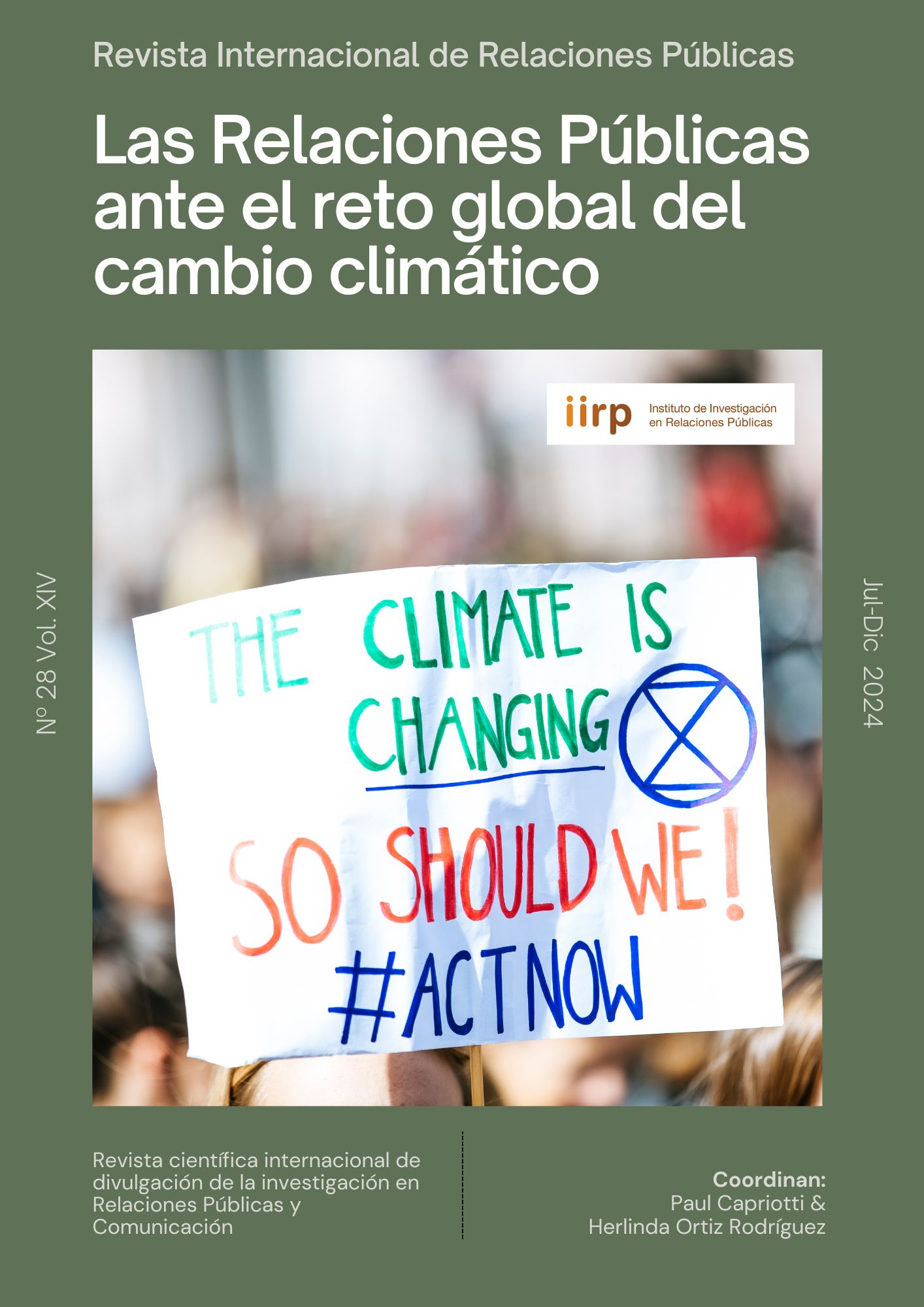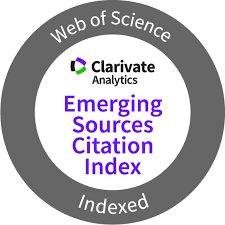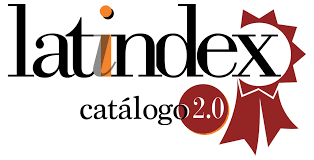There is an urgent need to talk about well-being in Higher Education Institutions: What is the role of public relations and organizational communication?
DOI:
https://doi.org/10.5783/revrrpp.v14i28.867Keywords:
well-being, public relations, organizational communication, students, higher education institutionsAbstract
Organizational communication has undergone operational changes over time. Unidirectional and sequential models are obsolete and have increasingly been replaced by more symmetrical and bidirectional models. In this sense, it is important to consider all the audiences involved in communication, understanding that message recipients are increasingly active players, and that their feedback is fundamental. On the other hand, the issue of well-being has been on the agenda of many organizations, as the well-being of organizational actors may be related to their motivation, commitment and performance. Despite this, these two topics have been treated individually, disregarding their possible relationship, and there has also been little investment in the context of higher education. In this research study, we sought to understand the extent to which the two themes intersect, fitting them into the context of higher education. We therefore wanted to understand how the communication offices of higher education institutions (HEIs) have acted in relation to the communication of student assistance. To this end, we carried out a qualitative study, operationalized by conducting 8 semi-structured interviews with 8 heads of communication offices from 8 different higher education institutions. We only took public institutions into consideration, as they were the majority of our sample. To complement this data collection, we also analyzed the websites of the 15 Portuguese Public Polytechnic Institutes. Through the analysis of the interviews, we can generally conclude that, although the role of communication offices is central in this field, communication about social action is still very scarce. The analysis of the interviews shows that it is still difficult to establish a “manual of good practices” in terms of communication, and it is also difficult to establish which channel is the most appropriate, depending on the type of audience. The heads of the communication offices also mention a difficulty in personalizing communication and making it more inclusive. By analyzing the websites, we found that although some institutions already have initiatives on the subject, there is still a need for major investment in this area, and there is also a need for a close relationship between the communications offices and the psychology and student support offices. Of the 15 Polytechnic Institutes analyzed, there were still 2 where there was no promotion or initiative on well-being during the first semester of 2024. We can therefore conclude that there is still a way to go in the communication that takes place between Higher Education Institutions - public relations and organizational communication play a fundamental role here, especially in terms of inclusion, welcome and even academic success.
Downloads
References
Almansa-Martínez, A., Castillero-Ostio, E., & Castillo-Esparcia, A. (2024). Gabinetes de comunicación en Andalucía: desarrollo y afianzamiento (2003-2022). Revista De Comunicación, 23(1), 17–32. https://doi.org/10.26441/RC23.1-2024-3356
Alexandre, J. D., Carvalho, H., Fonseca, A. M., & Castro, C. A. (2022). Estado emocional e coping em estudantes universitários no confinamento provocado pela COVID-19. Psicologia, 36(1), 51-60. https://doi.org/10.17575/psicologia.1782
Baik, C., Larcombe, W., & Brooker, A. (2019). How universities can enhance student mental wellbeing: The student perspective. Higher Education Research & Development, 38(4), 674-687. https://doi.org/10.1080/07294360.2019.1576596
Carmack, H. J., Nelson, C. L., Hocke-Mirzashvili, T. M., & Fife, E. M. (2018). Depression and anxiety stigma, shame, and communication about mental health among college students: Implications for communication with students. College Student Affairs Journal, 36(1), 68-79.
Cruz, C., & Almeida, L. S. (2022). Cursos Técnicos Superiores Profissionais: As escolhas e expetativas dos estudantes. Revista E-Psi, 11(1), 194-207.
Cuenca-Fontbona, J., Compte-Pujol, M. & Sueldo, M. (2022). The function of internal communication during the COVID-19 health crisis: Trans-formation or transubstantiation?. Anàlisi: Quaderns de Comunicació i Cultura, 67, 7-26. DOI: https://doi.org/10.5565/rev/analisi.3553
Dawson, S. (2006). A study of the relationship between student communication interaction and sense of community. The Internet and Higher Education, 9(3), 153-162. https://doi.org/10.1016/j.iheduc.2006.06.007
Ferreira, F. M., Nunes, H. B., Oliveira, M., Oliveira, M. M. & Ribeiro, R. (2014). História da Universidade do Minho 1973/1974 - 2014. Braga: Fundação Carlos Lloyd Braga.
Gonçalves, G. (2010). Introdução à Teoria das Relações Públicas. Porto Editora.
Grant, F., Guille, C., & Sen, S. (2013). Well-being and the risk of depression under stress. Plos One, 8 (7), e67395. https://doi.org/10.1371/journal.pone.0067395
Grunig, J.E. & Grunig, L.A, (1992). Models of public relations and communication. In J. E. Grunig, (Ed.), Excellence in Public Relations and Communication Management, Hillsdale NJ, Lawrence Erlbaum Associates, Inc.
Joelle, M.( 2019). Espiritualidade 4.0 - Um dos Pilares da Gestão das Organizações e das Empresas. Rh Editora.
Mourão, R. (2023). Entre Vozes e Silêncios: A Avaliação 360º e a Comunicação Organizacional. Editora do Instituto Politécnico de Lisboa.
Mourão, R.; Miranda, S.; Gonçalves, G. (2016). O Estado da Arte de Comunicação Organizacional. Revista Communication Studies, 23, 69-85.
Kunsch, M. (2018). A comunicação estratégica nas organizações contemporâneas. Media & Jornalismo. Coimbra University Press 33 (18), 13-24.
Ndlela, M. N., & Madsbu, J. P. (2022). Internal Communications During the Pandemic: Challenges and Implications. In Organizational Communication and Technology in the Time of Coronavirus: Ethnographies from the First Year of the Pandemic (pp. 231-249). Cham: Springer International Publishing.
Oliveira, I.(2019).Prefácio. Scheid, D., Machado, J. & Pérsigo, P. (org.). (2019). Tendências em Comunicação Organizacional - Temas emergentes no contexto das Organizações. FACOS – UFSM.
Pacheco, C.; Carlos, H.; Grilo, M. M.; Barradas, V. (2021). Repenser les Relations Publiques en temps de pandémie: La communication numérique du Polytechnique de Portalegre. ESSACHESS - Journal for Communication Studies 14, No 2(28), 101-128. Elsevier. https://doi.org/10.21409/6ma8-1183
Quivy, R., & Campenhoudt, L.V. (1998). Manual de Investigação em Ciências Sociais. Gradiva.
Ruão, T.; Freias, R.; Ribeiro, P. & Salgado, P. (2014). Comunicação Organizacional e Relações Públicas, numa travessia conjunta. In T. Ruão, R. Freias, P. Ribeiro, & P. Salgado (eds) Comunicação Organizacional e Relações Públicas: horizontes e perspetivas. Relatório de um debate. Centro de Estudos de Comunicação e Sociedade, 16-39. Universidade do Minho.
Ruão, T. (2008). A Comunicação Organizacional e os Fenómenos de Identidade: a aventura comunicativa da formação da Universidade do Minho, 1974-2006. (Tese de Doutoramento em Ciências da Comunicação), Universidade do Minho, Braga. Retirado de http://repositorium.sdum.uminho.pt/bitstream/1822/8841/1/tese%20final.pdf
Ruão, T. (2005). O papel da identidade e da imagem na gestão das universidades. Comunicação apresentada em IV Congresso da SOPCOM - Associação Portuguesa de Ciências da Comunicação, Universidade de Aveiro, Aveiro.
Saad, E. (2021). Comunicação Organizacional e transformação digital: novos cenários,novos olhares. In C. Terra, B. M. Dreyer, J. F. Raposa (Ed), Comunicação Organizacional: práticas, desafios e perspectivas digitais (p.13-23). São Paulo: Summus.
Shannon, C. & Weaver, W. (1949). The mathematical theory of communication. University of Illinois Press. Urbana and Chicago.
Scheid, D., Machado, J. & Pérsigo, P. (org.). (2019). O cenário (mutável) da comunicação organizacional e das relações públicas Tendências em Comunicação Organizacional - Temas emergentes no contexto das Organizações. FACOS – UFSM.12-21.
Seligman, M. & Adler, A. (2018). Positive education. In J. F. Helliwell, R. Layard & J. Sachs (Eds.), Global happiness policy report. Global Happiness Council.
Silva, S. (2022). Comunicar a Responsabilidade Social: um modelo de atuação para as universidades públicas portuguesas. Covilhã: LABCOM.
Silva, S., Ruão, T. & Gonçalves, G. (2021). Comunicar a responsabilidade social: um modelo de comunicação para as universidades públicas portuguesas. Estudos em Comunicação, 3, 115-148. https://doi.org/10.25768/20.04.03.33.06
Tilli, N. & Villar, M. (2024). Universities and student mental health at the intersection of communication, representations, and stigma. An international comparative study. ZER - Revista de Estudios de Comunicación, 29(56), 203-222 . https://doi.org/10.1387/zer.24873
Wæraas, A. & Solbakk, M. N. (2009). Defining the essence of a university: lessons from higher education branding. Higher Education(57), 449-462. https://doi.org/10.1007/s10734-008-9155-z
Downloads
Published
How to Cite
Issue
Section
License
Copyright (c) 2024 Rita Mourao, Inês Sousa , Cláudia Pacheco , Susana Mourão , Sandra Miranda, Sónia Silva

This work is licensed under a Creative Commons Attribution-NonCommercial-NoDerivatives 4.0 International License.
Authors publishing in this journal agree to the following terms:
a. Authors retain copyright and grant the journal the right to be the first publication of the work as licensed under a Creative Commons Attribution License that allows others to share the work with an acknowledgement of authorship of the work and initial publication in this journal.
b. Authors may separately enter into additional arrangements for non-exclusive distribution of the version of the work published in the journal (e.g., placing it in an institutional repository or publishing it in a book), with an acknowledgement of initial publication in this journal.
c. Authors are allowed and encouraged to disseminate their work electronically (e.g. in institutional repositories or on their own website) before and during the submission process, as it can lead to productive exchanges, as well as earlier and higher citation of published work (see The Effect of Open Access).





